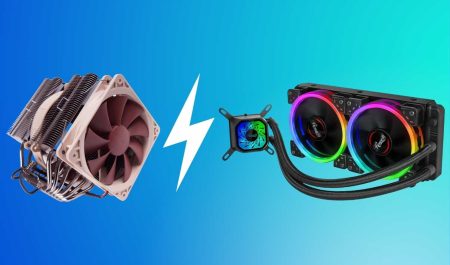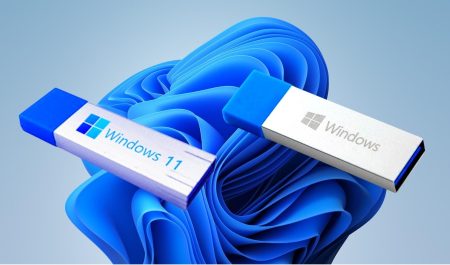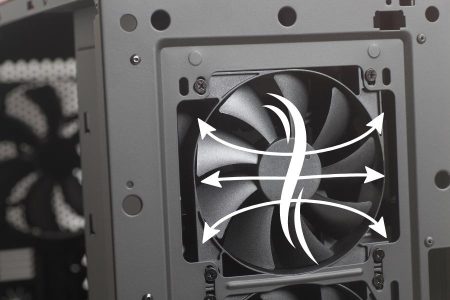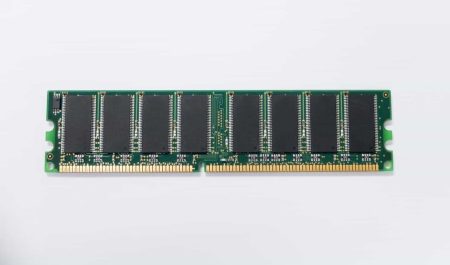Solid State Drives (SSDs) continue to grow in popularity due to their performance and reliability benefits over traditional spinning hard drives (HDDs). SSDs come in a variety of form factors, with the most popular being 2.5″ SATA SSD drives. Recently, a new form factor called Non-Volatile Memory Express (NVMe) has emerged and is quickly gaining market share.
According to research, NVMe SSDs are available in both M.2 and PCIe card formats and offer significantly better performance than SATA SSDs. So, are NVMe SSDs faster?
The answer is an unequivocal yes! Along with my personal test results, a recent study by StorageReview.com found that NVMe drives offer up to 4x the performance of SATA SSDs in some cases. This dramatic performance increase is due to several factors, including the fact that NVMe drives support much higher queue depths than SATA drives.
What Is NVMe? How It is Different From Rest?
NVM Express (NVMe) is an open logical device interface specification for solid-state drives (SSDs). It allows an SSD to exploit the full performance potential of the PCI Express bus. The NVMe specification was developed by a consortium of more than 60 companies, including storage, server, and chipset vendors. The first products using NVMe were announced in June 2013.
The NVM Express SSDs offer several advantages over SATA SSDs:
Increased Performance
A single NVM Express SSD from Gen 4.0 can achieve up to five times the performance of a SATA SSD. That is more than 7 Gbps with a sequential write speed of 6 Gbps.
Increased Reliability
NVM Express SSDs support error correction, which allows them to withstand more wear than SATA SSDs. The NAND inside the SSD is protected from the effects of wear and tear, which increases the SSD’s life.
Higher Throughput
NVM Express SSDs can achieve higher throughput than SATA SSDs because they can take advantage of the full width of the PCI Express bus.
NVMe SSD Speed Vs SATA SSD Speed: What Matters
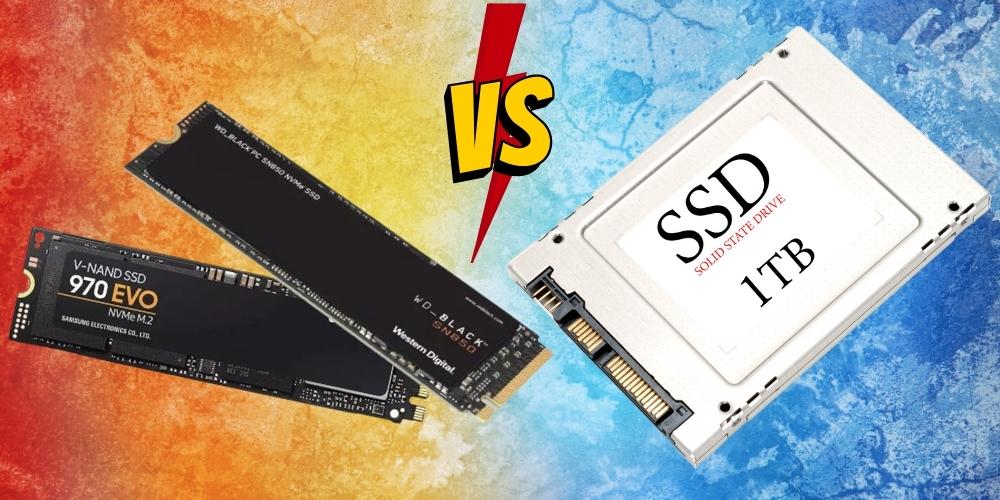
NVMe SSDs are becoming more popular in consumer devices due to their faster speed and low latency. On the other end, SATA SSDs are still a common choice for storage, but how do the two types compare?
SATA SSDs typically use a controller to access the flash memory, whereas NVMe SSDs communicate directly with the CPU. This allows NVMe SSDs to achieve higher speeds and lower latencies.
In general, NVMe SSDs are around 2-3 times faster than SATA SSDs. However, this can vary depending on the hardware and software used. For example, if the SATA SSD is using a fast controller and is connected to a good PCIe slot, it may be able to keep up with some NVMe drives.
Results of Data Write And Read Speed Test Comparisons
NVMe drives typically provide a sustained and reliable read-write speed of 3.5 GB/s, which increases when you choose a premium SSD. In comparison, SATA SSDs have a maximum transfer rate of 600 MB/s. As a result, NVMe SSDs can reach higher speeds than SATA SSDs, making them an ideal choice for modern gaming machines to comfortably play the most demanding games.
Recommended Variety Of NVMe SSDs: Well Worth SSDs

1. Kingston KC3000 (Fastest NVME SSD For Gaming)
It has a sequential read speed of 7000 Mbps with a sequential write speed of 7000 Mbps.

2. WD Black SN850 (Most Reliable NVMe SSD)
It has a sequential read speed of 7000 Mbps with a sequential write speed of 5300 Mbps.

3. Sabrent Rocket 4 Plus (Best Premium NVMe SSD For Gaming)
It has a sequential read speed of 7100 Mbps with a sequential write speed of 6600 Mbps.

4. Crucial P5 Plus (Most Affordable SSD for PCIe 4.0)
It has a sequential read speed of 6600 Mbps with a sequential write speed of 5000 Mbps.
Compare NVMe Vs M.2 SATA: The Fastest SSD Form Factors
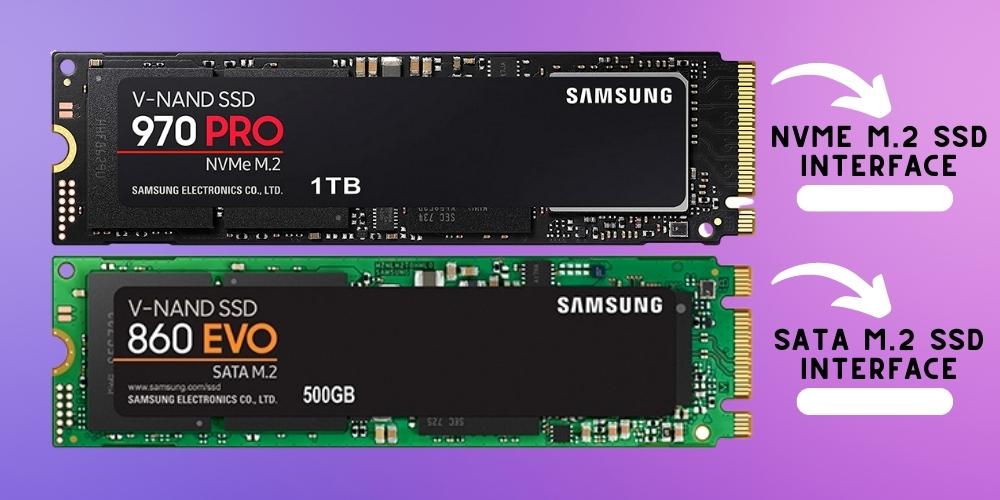
Among the different types of SSDs, the most powerful in performance SSDs are SATA M.2 and NVMe M.2 SSDs. There is a lot of confusion around NVMe and M.2 SATA, so let’s clear some of that up, and how they compare.
- M.2 SSDs come in two varieties of interface: those that use the SATA protocol (AHCI) called SATA M.2 SSDs and those that use the NVMe protocol with M,2 called NVMe M.2 SSD, and only NVME is used in slang.
- NVMe is a storage protocol, while M.2 is a form factor. Any SSD that uses the NVMe protocol will be called an NVMe SSD, regardless of the form factor M.2, which we do.
- NVMe-based SSDs are faster than SATA-based SSDs despite they are both M.2, the difference between SATA interfaces slightly lacks M.2 SSDs because NVMe is a more efficient protocol.
- Initially SATA (AHCI) interface types were designed for spinning disks, while NVMe was designed specifically for flash storage. That’s why NVMe SSDs are up to six times faster than SATA-based M.2 SSDs.
- M.2 SSD cards that use the AHCI protocol can only use four PCI lanes, while NVMe M.2 cards can use up to 16 lanes, which allows for even faster speeds.
- M.2 devices come in two different sizes: 2242 and 2280. The key difference between these two sizes is the number of pins on the connector. A 2242 M.2 device has 22 pins, while a 2280 M.2 device has 80 pins. This is important because not all motherboards support both sizes of M.2 devices.
- Another difference between NVMe and M.2 SATA SSD devices is their maximum data transfer speeds: 6 Gbps is for M.2 SATA SSDs while a massive 32 Gbps is the limit for NVMe SSDs with M.2 interface, respectively.
Do NVMe SSD Need Heatsinks?
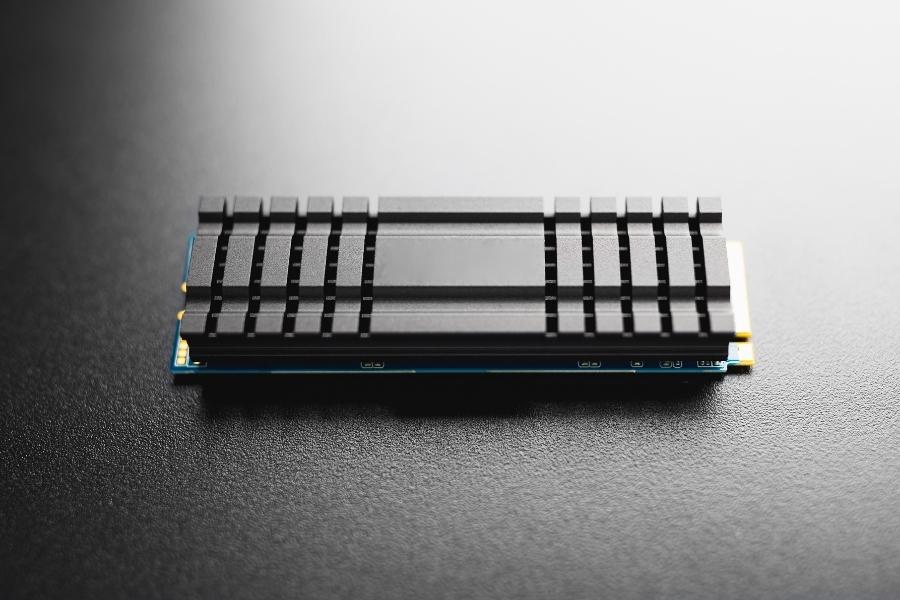
The short answer is no; NVMe SSDs don’t necessarily need heatsinks. However, if you’re looking to get the most from your NVMe SSD, a heatsink can help.
Heatsinks are designed to help remove heat from a component or system. This can be important for a number of reasons, including keeping the component or system running at its optimal temperature and preventing damage due to overheating.
In the case of NVMe SSDs, using a heatsink can help improve performance. When an NVMe SSD gets too hot, it can start to throttle back its performance to protect itself from damage. By using a heatsink, you can help keep the drive cooler and prevent it from throttling as much. This can result in improved performance and longer life for your NVMe SSD.
Do NVMe SSDs Come With Screws?
If you say, do newer NVMe SSDs come with screws? The answer is yes, most NVMe SSDs do come with screws. This is because the drives need to be securely attached to the motherboard to function properly.
While some screws may come pre-installed, it’s always a good idea to check to make sure that all of the screws are there before installing the SSD drive onto the MOBO. If any are missing, be sure to contact the manufacturer for a replacement.
Are NVMe SSDs Worth It?
There’s a lot of excitement around NVMe solid state drives (SSDs) because they can deliver much better performance than SATA SSDs. But are they really worth the extra cost? The hype, combined with the impressive read and write speeds, results in a worthy SSD for gaming PCs, editing machines, and workstations.
However, the choice varies for higher prices. That depends on your needs. NVMe SSDs are definitely faster than all other types of SATA SSDs, but their price premium can be significant. If you’re looking for the absolute best performance, then an NVMe SSD is the way to go. But if you don’t need the extra speed, then a SATA SSD will do just fine.


